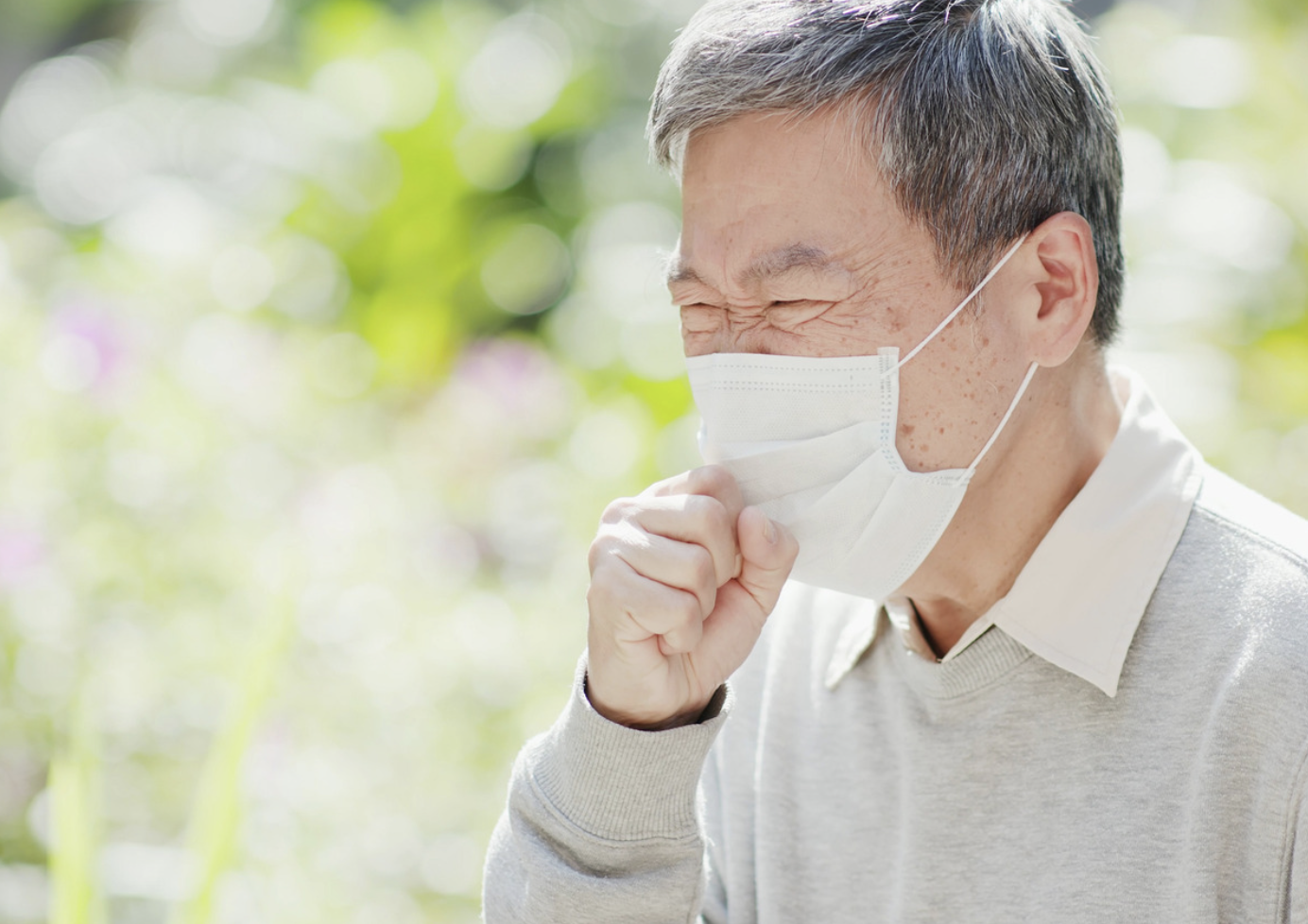Definition
Pertussis, also known as whooping cough, is a respiratory tract infection caused by Bordetella pertussis. This bacterial infection can cause severe and uncontrollable coughing that makes breathing difficult, often followed by high-pitched wheezing sounds like a "whoop". Pertussis can affect people of any age, but it can be dangerous and deadly if it strikes infants and young children. However, since the discovery of the vaccine, cases of pertussis have continued to decline. The CDC reported a total of fewer than 18,000 pertussis cases in 2016, with 7 reported deaths. Deaths caused by pertussis are rare, mostly occurring in infants, making it crucial for pregnant women and others in close contact with infants to be vaccinated against pertussis.
Causes
Pertussis is caused by infection with the bacterium Bordetella pertussis. This disease is highly contagious and is only found in humans. Pertussis spreads from person to person through droplets (tiny water droplets). People with pertussis typically spread droplets containing bacteria into the air when coughing, sneezing, laughing, or talking. Most cases of pertussis in infants are transmitted by siblings, parents, or caregivers who may not know they have the disease.
When droplets containing bacteria are inhaled and enter the respiratory tract, the bacteria attach to small structures like hair (cilia) lining the upper respiratory tract and release a toxin that can damage the respiratory tract's structure. This toxin causes the airways to swell, making it difficult to breathe. Additionally, the toxin causes respiratory tract inflammation, resulting in a prolonged dry cough and other symptoms similar to the flu. People infected with pertussis can spread the disease for up to about 2 weeks after the onset of the first cough, and symptoms can last 3 to 6 weeks.
Risk factor
Some factors that may increase the risk of getting pertussis include:
- Incomplete pertussis vaccination status: Infants under 12 months of age who are not vaccinated or have not completed the full vaccination schedule are at the highest risk of pertussis infection and severe complications, including death. Pertussis vaccine effectiveness also decreases with age, requiring booster doses at certain ages. Adolescents and adults who do not receive pertussis booster vaccines are also at risk of infection.
- Pregnancy
- An ongoing pertussis outbreak in your area
- History of close contact with a person infected with pertussis
- History of asthma may increase the risk of infection and complications.
Symptoms
Pertussis symptoms typically begin to appear and develop within 5 to 10 days after exposure to the bacteria. However, in some cases, pertussis symptoms may not develop until 3 weeks after exposure. Pertussis symptoms can be divided into 3 stages:
Early symptoms
The disease usually starts with symptoms like the flu, mild cough, or fever. In infants, the cough may be very minimal or even absent. Babies may have symptoms known as apnea, where there are periods of pauses or stops in the child's breathing pattern. Pertussis is most dangerous for babies. About half of infants under 1 year old with this disease require hospitalization. Pertussis in the early stage often resembles common flu, so it may not be diagnosed until more severe symptoms appear. Early symptoms can last 1 to 2 weeks and typically include:
- Runny nose
- Mild fever (usually minimal during the course of the illness)
- Occasional mild cough
- Apnea in babies
Advanced stage symptoms
After 1 to 2 weeks and as the illness progresses, typical pertussis symptoms may appear, such as:
- Long, rapid, uncontrollable coughing followed by a high-pitched "whooping" sound
- Vomiting during or after coughing
- Fatigue after coughing
Pertussis can cause severe, rapid, repeated coughing until all the air is expelled from your lungs. When there's no more air in the lungs, you're forced to inhale with a loud "whoop" sound. This prolonged coughing can cause vomiting and extreme tiredness. Although you're often exhausted after coughing, you usually look quite well when not coughing. Coughing becomes more frequent and severe as the illness progresses, especially at night. The "whoop" sound is often not heard if you have milder symptoms, especially in adolescents, adults, and those vaccinated against pertussis.
Recovery phase
The recovery phase from pertussis can occur slowly. The cough will become milder and less frequent. However, coughing may recur with other respiratory infections for months after the onset of pertussis infection.
Diagnosis
In diagnosing pertussis, the doctor will begin by interviewing to inquire about the symptoms you're experiencing and your pertussis vaccination status. Additionally, the doctor will perform a physical examination, particularly of the lungs, to listen to breath sounds using a stethoscope. The doctor may also recommend some supportive tests to help confirm the diagnosis of pertussis, such as:
- Swab and culture tests: The doctor will take a swab sample from the area where the nose and throat meet (nasopharynx). The sample is then examined to see if there are bacteria causing pertussis.
- Blood tests: Blood samples can be taken and sent to the laboratory to check the number of white blood cells. A high white blood cell count usually indicates an infection or inflammation. However, this test is not specific to pertussis.
- Chest X-ray: This helps check for signs of inflammation or fluid in the lungs, which can occur with pneumonia complications or other respiratory infections.
Management
Pertussis is an infectious disease caused by bacteria, so the primary management is antibiotics. Antibiotics are most effective in the early stages of pertussis and can also be used in the later stages of infection to prevent it from spreading to others. Although antibiotics can help treat the infection, they cannot prevent or treat the cough symptoms. Over-the-counter cough medicines (OTC) are not recommended in pertussis cases because they have no effect on cough symptoms and can cause dangerous side effects in infants and young children. Some things you can do to help reduce symptoms and speed up the recovery process include:
- Get plenty of rest to strengthen your body to fight the disease.
- Eat small, frequent meals as you like. Eating less and more often can help prevent vomiting, sometimes caused by severe coughing.
- Maintain air cleanliness. Keeping the air around you free from dust, smoke, and other irritants can help alleviate coughing.
- Drink plenty of fluids. Stay hydrated by drinking plenty of water or juice. Watch out for signs of dehydration, such as dry lips, fatigue, or less frequent urination.
Complications
Pertussis occurring in adolescents and adults usually resolves without complications. However, complications that occur are more likely due to severe coughing, such as:
- Bruised or fractured ribs
- Abdominal hernias
- Rupture of blood vessels in your skin or the whites of your eyes (subconjunctival hemorrhage)
In infants, especially those under 6 months old, complications of pertussis are more severe and may include:
- Pneumonia
- Slow or stopped breathing
- Dehydration or weight loss due to difficulty feeding
- Seizures
- Brain damage
Prevention
The best way to prevent pertussis is by getting vaccinated against it, often administered in combination with vaccines for diphtheria and tetanus. According to the Indonesian Pediatric Society (IDAI) immunization schedule, the pertussis vaccine in the form of the DPT (Diphtheria, Pertussis, Tetanus) combination is given at ages 2, 3, and 4 months or ages 2, 4, and 6 months, followed by a booster at 18 months of age. Subsequent boosters are given at ages 5-7 years and 10-18 years.
When to see a doctor?
Consult a doctor if you or your child experiences prolonged coughing accompanied by:
- Vomiting
- The face turning red or blue
- Difficulty breathing (shortness of breath) or periods of pause or stoppage while breathing
- Hearing a "whoop" sound when inhaling
- dr Anita Larasati Priyono
American Lung Association. Learn About Pertussis. (2021). Retrieved 18 Februari 2022, from https://www.lung.org/lung-health-diseases/lung-disease-lookup/pertussis/learn-about-pertussis
Bhargava, Hansa D. Whooping Cough. (2021). Retrieved 18 Februari 2022, from https://www.webmd.com/children/whooping-cough-symptoms-treatment
*CDC. Pertussis (Whooping Cough). (2017). Retrieved 18 Februari 2022, from https://www.cdc.gov/pertussis/about/causes-transmission.html
IDAI. Jadwal Imunisasi IDAI 2020. (2021). Retrieved 18 Februari 2022, from https://www.idai.or.id/tentang-idai/pernyataan-idai/jadwal-imunisasi-idai-2020
Lauria, Ashley M., et al. Pertussis. (2021). Retrieved 18 Februari 2022, from https://www.ncbi.nlm.nih.gov/books/NBK519008/
Moore, Kristeen. Whooping Cough. (2018). Retrieved 18 Februari 2022, from https://www.healthline.com/health/pertussis
Whooping Cough. (2022). Retrieved 18 Februari 2022, from https://www.mayoclinic.org/diseases-conditions/whooping-cough/symptoms-causes/syc-20378973











